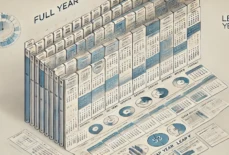A movie night ruined by a green screen on VLC? Don’t despair! We’ve all been there, forced to confront a frustrating green void instead of our favorite show. But fear not, fellow movie enthusiasts! This guide will equip you with the knowledge to repair the green screen issue in VLC Media Player and get you back to enjoying your videos.
Understanding the Green Screen Phenomenon
The green screen in VLC can be a symptom of several underlying issues. It could be a problem with the video file itself, outdated graphics drivers, or even a setting within VLC causing a conflict. Before diving headfirst into solutions, let’s understand why this happens.
- Corrupted Video File: Sometimes, the video file you’re trying to play might be damaged. This damage can manifest as a green screen, distorted playback, or choppy video.
- Outdated Graphics Drivers: Your graphics card is responsible for displaying visuals on your screen. Outdated drivers can lead to compatibility problems with VLC, resulting in a green screen.
- VLC Settings Conflict: Specific VLC settings, particularly those related to hardware acceleration, might clash with your system configuration, causing a green screen.
The Troubleshooting Arsenal: Battling the Green Screen
Now that we’ve identified the potential culprits, let’s explore the solutions! We’ll approach these solutions in a step-by-step manner, starting with the easiest fixes and progressing towards more technical solutions.
1. Restarting VLC and Your System
Sometimes, a simple restart is all it takes. Close VLC completely, then relaunch it. If the problem persists, restart your entire system. This can clear up temporary glitches that might be causing the green screen.
2. Checking the Video File
Before tinkering with VLC settings, try playing the problematic video file with another media player on your system. If the green screen persists across different players, it’s likely a corrupted video file. You might need to obtain the video from another source.
3. Disabling Hardware Acceleration
VLC utilizes hardware acceleration to offload some processing tasks to your graphics card, boosting performance. However, this feature can sometimes conflict with your system, leading to a green screen. Here’s how to disable it:
- Open VLC Media Player.
- Click on Tools > Preferences.
- In the Preferences window, navigate to the Input/Codecs tab.
- Under the Hardware-accelerated decoding section, uncheck the box next to the option you’re currently using (e.g., DXVA2 video decoder, VDPAU decoder).
- Click Save.
- Restart VLC and try playing the video again.
4. Updating Graphics Drivers
Outdated graphics drivers can be a major cause of display issues. Here’s how to update them:
Windows
* Right-click on your desktop and select Display settings.
* Click on Advanced display settings.
* Under Related settings, click on Display adapter properties.
* Click on the Driver tab.
* Click on Update driver.
* Choose Search automatically for updated driver software.
* Follow the on-screen instructions to update your graphics driver.
Mac
* Click on the Apple menu and select System Preferences.
* Click on Software Update.
* If a graphics driver update is available, it will be listed here. Click on Update Now to install it.
Linux
* The process for updating graphics drivers on Linux varies depending on your distribution. Refer to your specific distribution’s documentation for detailed instructions.
5. Trying a Different Video Output Module
VLC offers various video output modules that interact with your graphics card for display. Switching to a different module might resolve the green screen issue. Here’s how to do it:
- Open VLC Media Player.
- Click on Tools > Preferences.
- In the Preferences window, navigate to the Video tab.
- Under the Output module section, try selecting a different option (e.g., DirectX video output, OpenGL video output).
- Click Save.
- Restart VLC and try playing the video again.
6. Reinstalling VLC Media Player
If none of the above solutions work, try reinstalling VLC. This can resolve any corrupted program files that might be causing the green screen. Here’s how to reinstall VLC on Windows.
- Open the Control Panel.
- Click on Programs and Features.
- Find VLC media player in the list, right-click on it, and select Uninstall.
Advanced Troubleshooting
The following solutions delve deeper into the system and require a bit more technical knowledge. If you’re comfortable, proceed, but exercise caution and create a system restore point before making significant changes.
7. Deactivating Conflicting Applications
Certain software applications might interfere with VLC’s video rendering, causing a green screen. Try temporarily closing any programs that might conflict with VLC, such as antivirus software, screen capture tools, or overlay applications. If the green screen disappears after closing a specific program, you’ve identified the culprit. You can then decide whether to keep the program closed while using VLC or investigate compatibility settings within that program.
8. Adjusting Advanced Video Settings
VLC offers a plethora of advanced video settings that can be tweaked to potentially address the green screen issue. However, these settings can be intricate, and modifying them incorrectly might lead to unintended consequences. If you’re comfortable with some technical exploration, refer to VLC’s official documentation for detailed explanations of each setting. It’s advisable to make minor adjustments and test the video playback after each change to identify the solution without causing further issues.
9. Seeking Professional Help
If you’ve exhausted all the solutions above and the green screen persists, consider seeking assistance from a technician or a knowledgeable friend. They might be able to diagnose the problem more effectively based on your specific system configuration and software versions.
Prevention is Key
While troubleshooting the green screen can be frustrating, there are steps you can take to prevent it from happening again. Here are some preventative measures:
- Keep VLC Updated: Regularly check for and install the latest updates for VLC Media Player. These updates often include bug fixes and compatibility improvements that can address potential green screen issues.
- Maintain Updated Graphics Drivers: As mentioned earlier, outdated graphics drivers can be a major culprit. Make it a habit to update your graphics drivers periodically to ensure compatibility with VLC and other applications.
- Consider Alternative Media Players: If the green screen persists despite your best efforts, you might want to explore using a different media player. There are several excellent open-source and commercial media players available, each with its own strengths and weaknesses. Experimenting with different players can help you find one that works seamlessly with your system.
Conclusion:
The green screen in VLC can be a bothersome issue, but with the right approach, you can overcome it and get back to enjoying your videos. By following the troubleshooting steps outlined in this guide, you’ll be well-equipped to diagnose the problem and implement the appropriate solution. Remember, if you get stuck, don’t hesitate to seek help from a knowledgeable source. With a little patience and troubleshooting, you can banish the green screen and get the most out of your VLC experience.























































